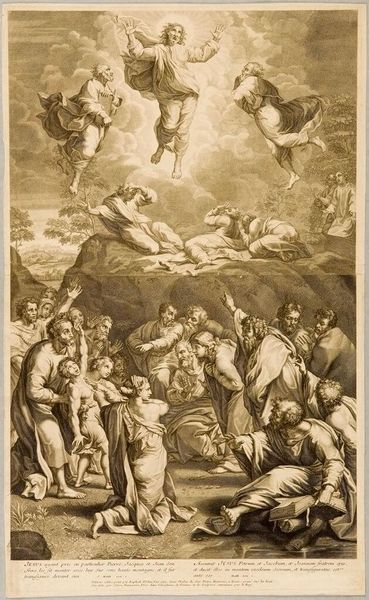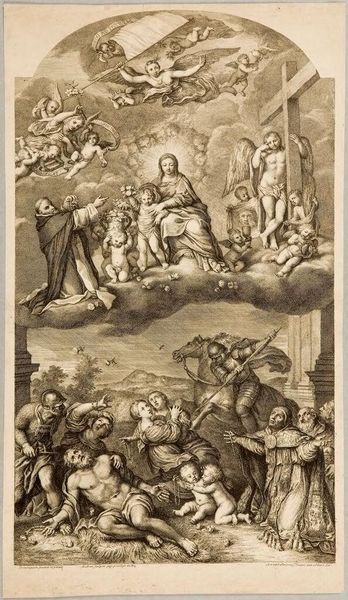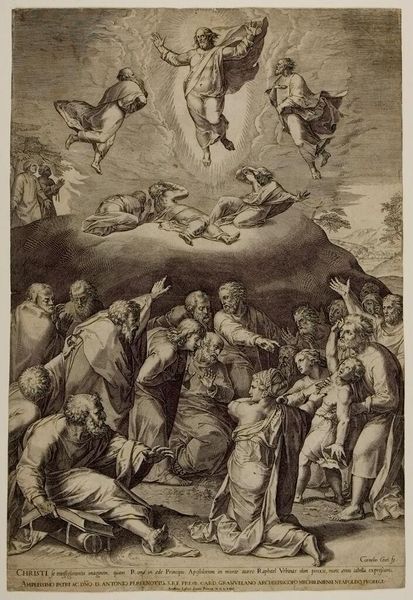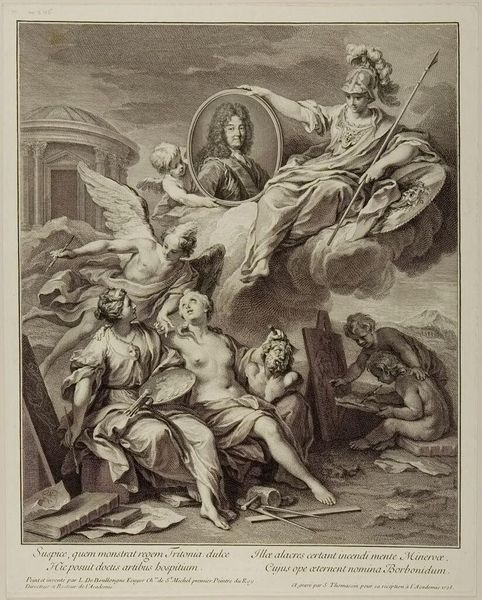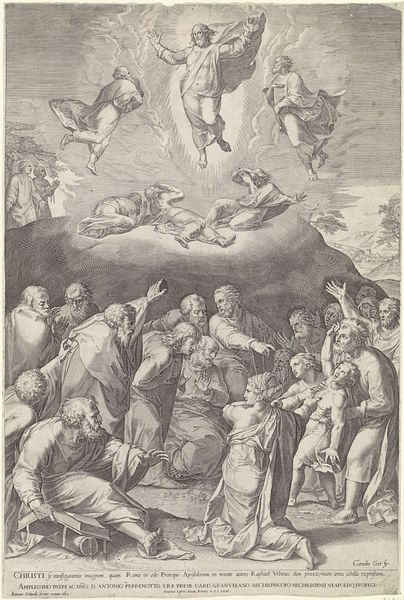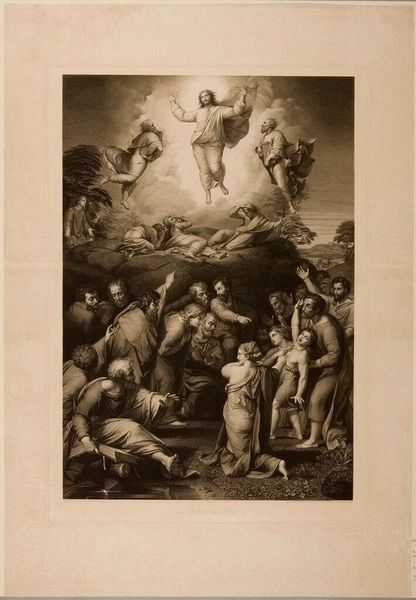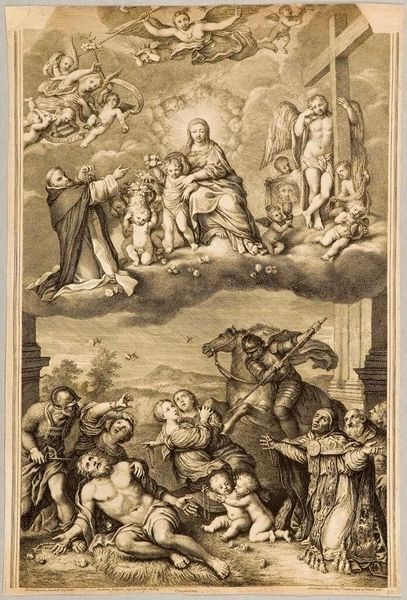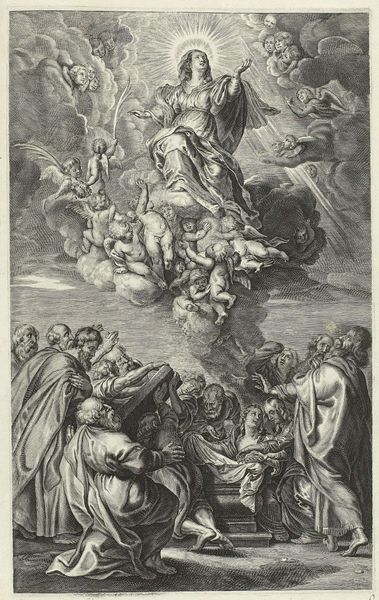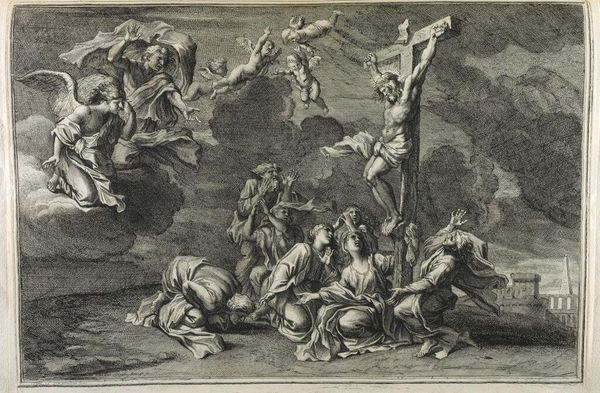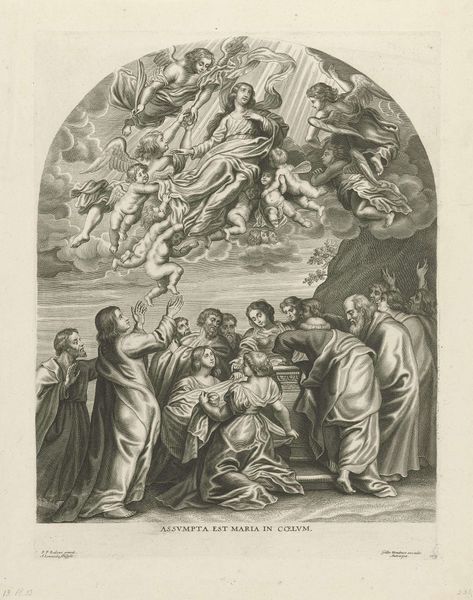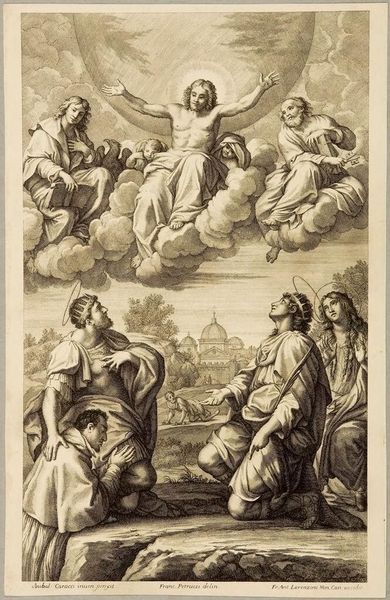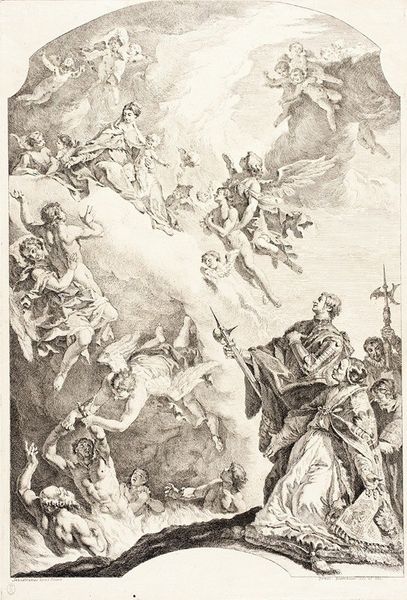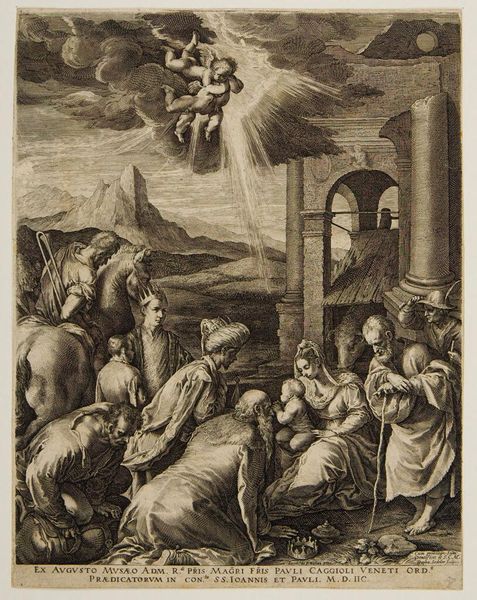
Copyright: CC0 1.0
Curator: Here we have Simon Thomassin’s “Transfiguration,” now part of the Harvard Art Museums collection. Editor: It’s a strikingly vertical composition, creating a real sense of upward movement. The layering of figures gives it depth, but the material itself looks to be just paper. Curator: Right, it's an engraving. This work encapsulates the religious and political power structures of 17th- and 18th-century France, reflecting the Church's influence through its visual representation. Editor: Engraving allowed for the mass production and dissemination of religious imagery, thus shaping public perception. The choice of paper as the medium connects it to the printmaking practices of the time. Curator: Absolutely. The transfigured Christ becomes a symbol of divine authority, while the disciples below embody faith and obedience. We see how gender and power intersect in the depiction of the kneeling figures. Editor: And let’s not forget the labor involved in producing such detailed engravings. It was skilled but repetitive work for the engraver. Curator: Indeed, by interrogating its social context, we uncover its role in reinforcing hierarchies of power. Editor: Thinking about the labor and materials makes the piece much more complex than a first glance suggests.
Comments
No comments
Be the first to comment and join the conversation on the ultimate creative platform.
